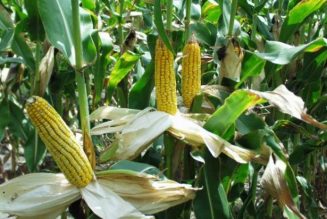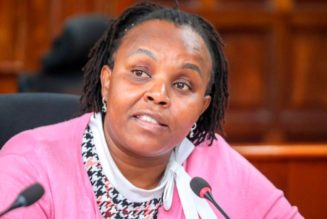Economy
Rising food and gas costs push Kenya’s inflation up to 9.2pc
Wednesday March 01 2023
Rising food and gas costs push Kenya’s inflation up to 9.2 percent from 9.0 percent. FILE PHOTO | NMG
Kenya’s inflation in February edged up for the first time in four months on renewed pressure on food and cooking gas prices, the statistics agency has reported.
Inflation — a measure of the cost of living over the last 12 months— rose to 9.2 percent from 9.0 percent the month before, the first rise since October.
Households spent 13.3 percent more to put food on the table compared to a year earlier, increased from a 12.8 percent bump in January, data from the Kenya National Bureau of Statistics showed Tuesday night.
Food usually has the biggest impact on the overall movement in prices because it accounts for nearly a third of the shopping basket for Kenyan families.
Pressure on food prices mainly came from vegetables whose production has been hit by a prolonged biting drought.
“Prices of most vegetables increased in February 2023 relative to January 2023. The prices of cabbages and carrots each increased by 11.3 percent [while]…kale-sukuma wiki and tomatoes increased by 11.0 percent and 7.8 percent, respectively,” KNBS managing director Macdonald Obudho wrote in a statement.
“The Housing, water, electricity, gas and other fuels’ index increased 0.4 percent between January 2023 and February 2023. This was mainly due to increase in prices of gas/LPG which rose by 4.7 percent between January and February 2023.”
The cost of transportation was flat month-on-month on unchanged diesel and super petrol prices but remained elevated at 12.9 percent compared with a year earlier.
President William Ruto, who took power in September partly on a campaign platform of easing the cost of living for the majority of poor households, has ruled out short-term fixes, dropping subsidies on unga and super petrol.
The Ruto administration has, however, denied consumers of super petrol a price drop since October, cash which it has since used to subsidise the purchase of diesel while maintaining the cushion on kerosene.
The Central Bank of Kenya, primarily tasked with stabilizing prices, last month kept its key lending rate, a signal to banks not to raise the cost of loans.
The decision followed a 175-basis point raise on the central bank rate to 8.75 between May and November last year after inflation breached the upper-limit target of 7.5 percent.
Increasing the key policy lending rate makes borrowing more expensive, and this is expected to reduce spending by businesses and families with the ultimate goal of lowering the prices of goods and services that have plagued the economy this year.
“The [Monetary Policy] Committee noted that the impact of the further tightening of monetary policy in November 2022 to anchor inflationary pressures were still transmitting in the economy,” CBK Governor Patrick Njoroge said on January 30.
“Additionally, the MPC noted that this action will be complemented by the recently announced Government measures to allow limited duty-free imports on specific food items, which are expected to moderate prices and further ease domestic inflationary pressures.”
The KNBS data shows diesel— largely consumed in key sectors of transportation, manufacturing and agriculture— has experienced the largest jump year-on-year of 46.1 percent to an average of Sh162.91 per litre in February.
Paris-based International Energy Agency (IEA), the global body which provides policy guidelines and analysis on the oil sector, says production of diesel has been hit by the stretched capacity that started even before Russia’s war on Ukraine a year ago.
Other commodities whose cost has risen sharply over the past year include super petrol (36.1 percent), kerosene (35.4 percent), wheat flour (29.4 percent), 50 units of electricity (23.6 percent), fortified maize flour (21.5 percent) and 13-kilo cooking gas (16.6 percent despite halving of VAT).









